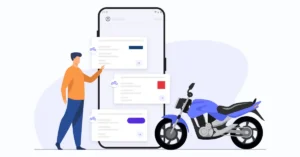
In the aftermath of the Covid-19 outbreak, the government enacted a variety of stimulus initiatives to aid limited liability enterprises during an unprecedented period of business disruption. As a result of many firms being obliged to close their doors or at least reduce their operations in order to comply with lockdown procedures, many found their cash flow reserves quickly depleted.
While these loans were valuable to many during the height of the epidemic, many businesses are now required to account for monthly repayments, even if they have not fully recovered from the pandemic’s effects what happens if you can’t pay back your bounce back loan? Scroll down to read!
What are the repayment terms of a Bounce Back Loan?
Originally, bounce-back loans were granted over a six-year period, with the first year free of payments. The fixed interest rate is 2.5%, but the government pays the interest and any additional fees for the first twelve months.
A business bounce-back loan is repaid in equal monthly instalments made directly to the lender.
No one could have guessed more than a year later that lockdown measures would still be in place when these loans were issued. Consequently, many companies that took out a bounce-back loan with the confidence that they would be able to repay it when the time came have discovered that their business has not returned to pre-pandemic levels as rapidly as they had anticipated. This has created enormous difficulties with regard to the repayment of this loan.
Pay As You Grow (PAYG) system will be implemented in September 2020 as part of the Winter Economy Plan in response to the government’s recognition of the possible issues that many firms could face.
What is the PAYG Bounce Back Loan initiative?
The PAYG ( Pay As You Grow) amendment established a variety of bounce back loan repayment choices to make it easier for businesses who anticipated repayment difficulties to defer bounce back loan repayments.
Originally, this payment option was made available to businesses once they have made the successful six monthly repayments; however, it is now available to all firms beginning with their first monthly payment. During the six-month payment holiday, interest will continue to accrue on a deferred loan, which will increase the total cost of the loan.
The ability to increase the term of the bounce-back loan scheme from six to ten years. This might mean the difference between a business being able to make its monthly payments and falling into arrears.
The option to make interest-only payments for six months, which could temporarily lessen the monthly payment obligation while ensuring no further interest is levied on the loan.
What takes place if a Bounce Back Loan is not repaid?
Expect the following consequences if your company defaults:
- In accordance with the usual operating processes of the bank, you will receive a letter.
- The bank may pursue debt collection and/or legal action if the payments are not repaid on time, although the practices of different lenders may vary.
- Banks have encouraged businesses not to request further borrowing in the future.
- Current proposals require approved lenders/creditors to adhere to “appropriate recovery tactics” and utilize the court as necessary.
Usually, lenders are required to grant a 12-month grace period before pursuing delinquent payments after sending a formal demand to the borrower. You can seek liquidation advice to reduce the stress of a bounce-back loan.
If you are a limited company director who is concerned about your ability to repay your bounce back loan, or if you have already defaulted on your loan, it is imperative that you seek immediate expert assistance and guidance. More options will be available to you and your firm the sooner you take action.







